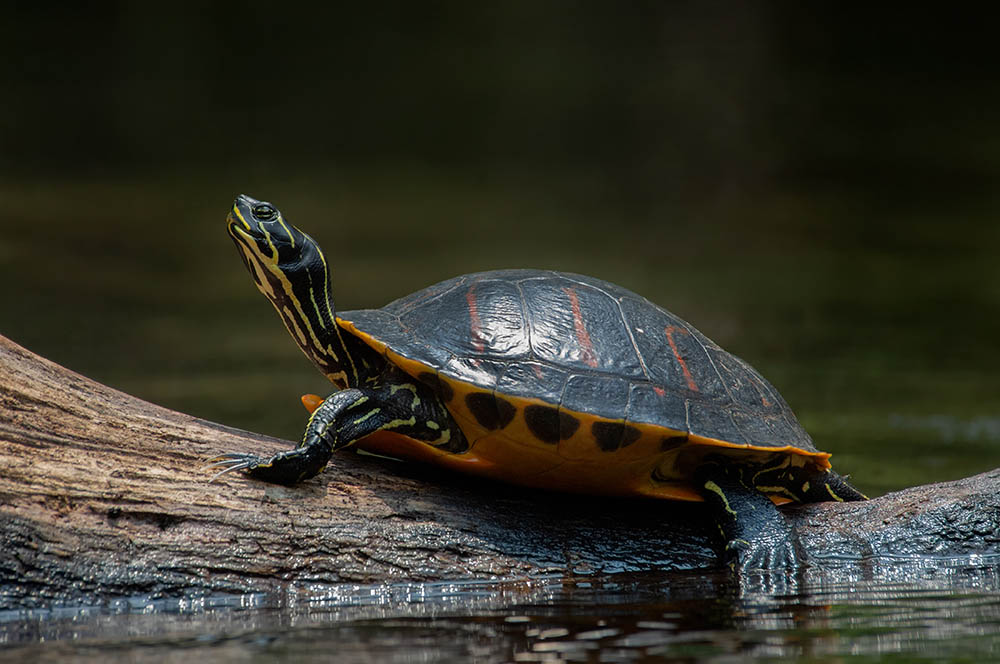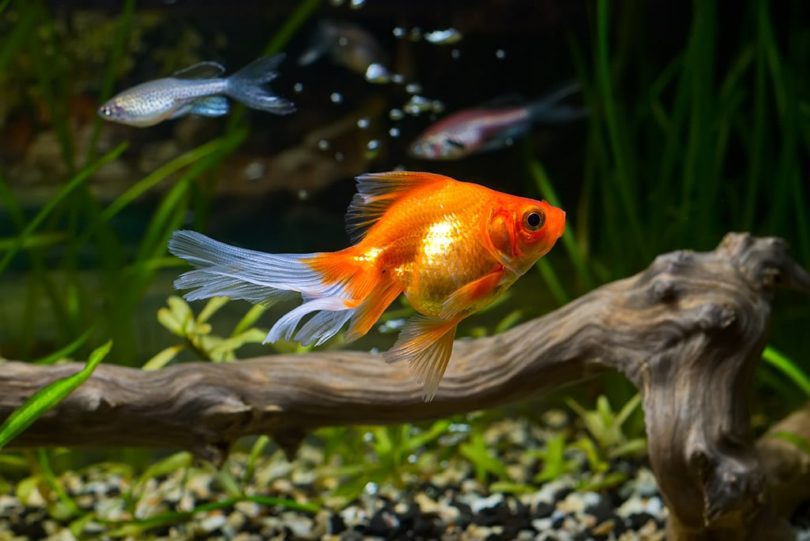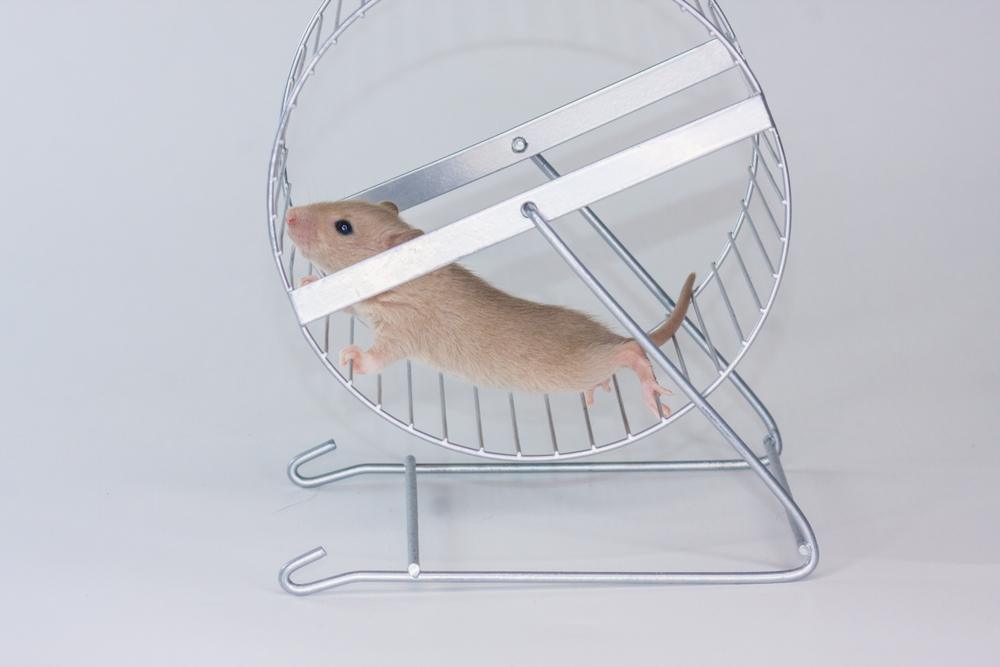With about 356 species of turtles found worldwide, identifying a particular species requires a bit of effort.1 Turtles come in a variety of sizes and can live in saltwater and freshwater environments, as well as on land. Tortoises are a particular family of land-dwelling turtles, with a few differences in appearance that help us tell them apart from other turtle species.
Whether you’re a do-gooder trying to determine the type of turtle you saved from a roadside or an experienced scientist conducting research, the first step in identifying turtles is learning the names and features of their major body parts.
In this article, we’ll discuss the major parts of the turtle’s body and how they can help you identify what kind of turtle you’re dealing with.

The Major Turtle Body Parts
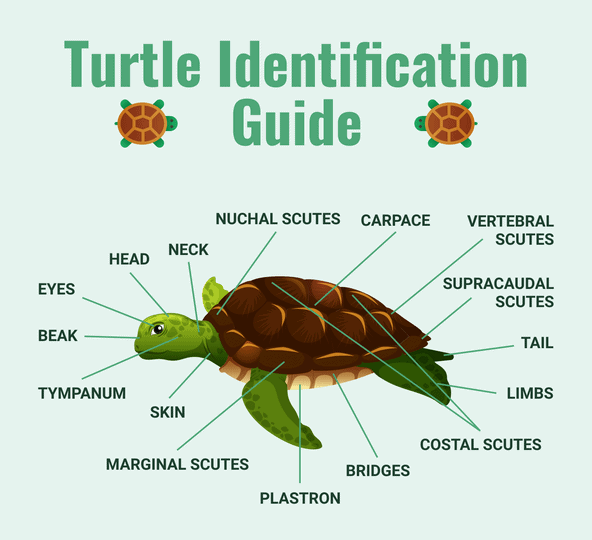
Head
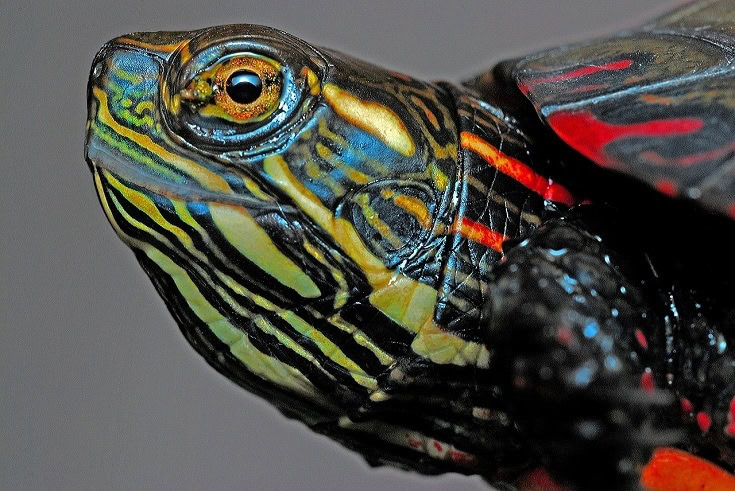
The turtle’s head is found on the front part of their body. Most turtles can pull their heads back into their shells as a defense mechanism. Some species, specifically sea turtles, can’t do it and are more at risk of injury than their land relatives. A turtle’s head contains several distinct parts including:
Eyes
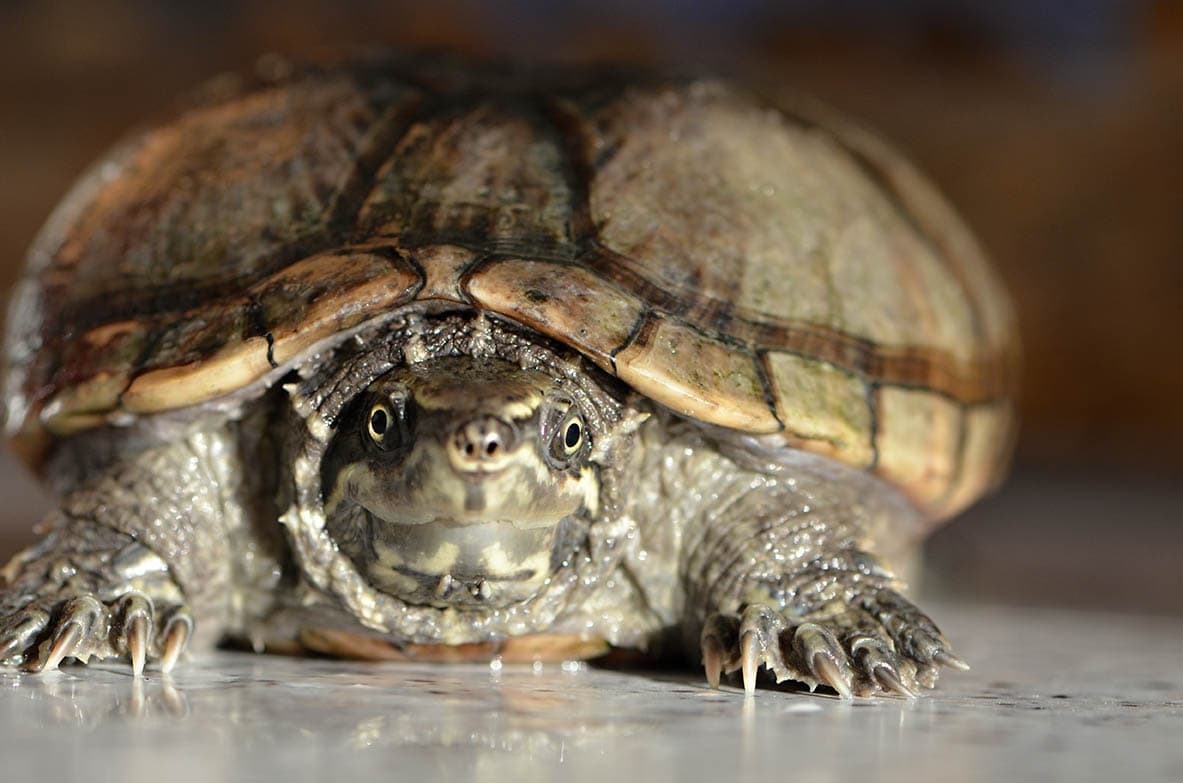
Most aquatic turtles have eyes higher up their heads than land turtles. The quality of a turtle’s vision varies, but it is believed that they can see colors. Turtles have an upper and lower eyelid, as well as a third eyelid, also called a nictitating membrane, that slides up and back to clean and protect their eyes.
Beak
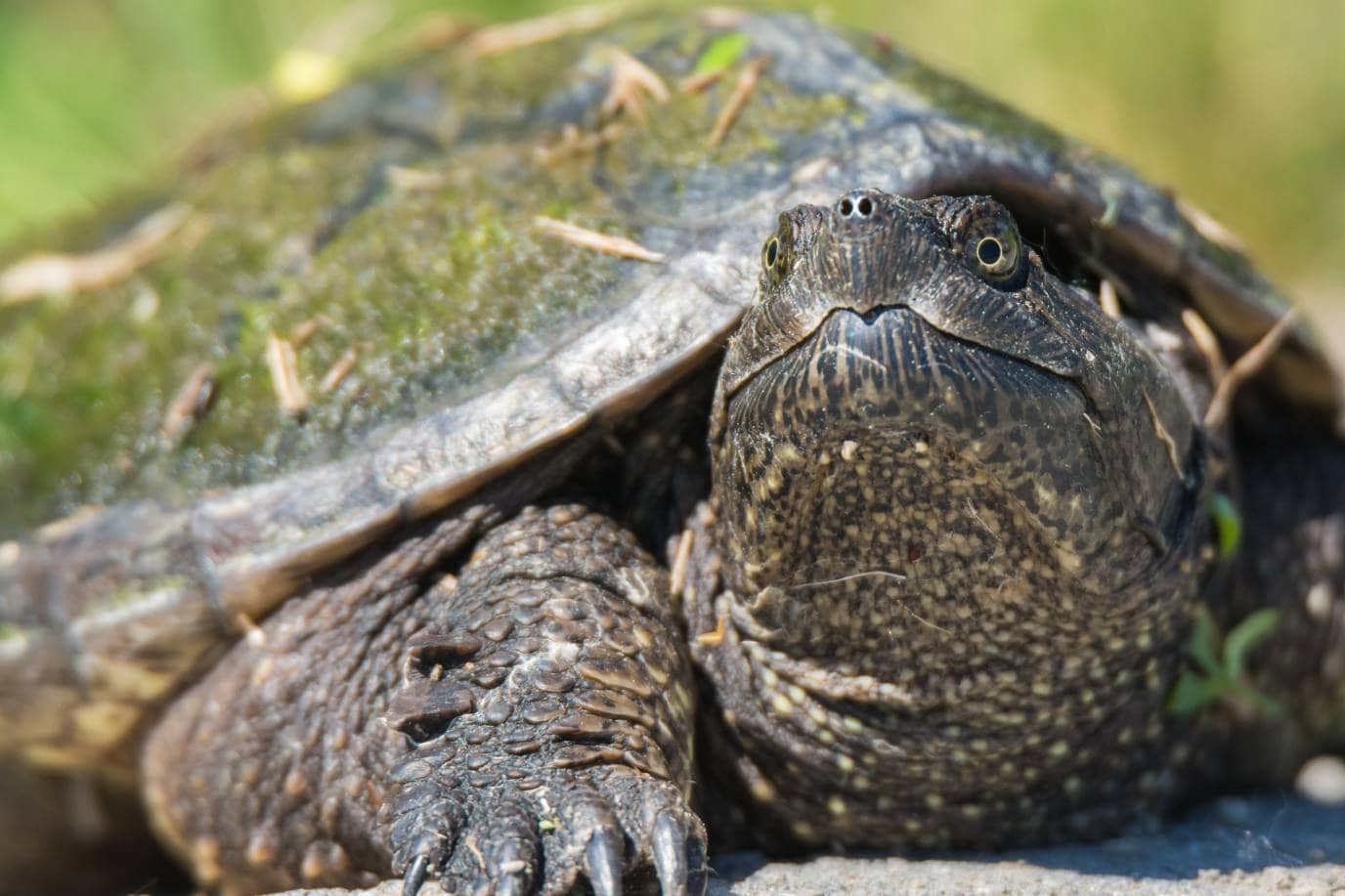
The turtle’s beak is on the front of their head and contains their nostrils and mouth. Inside their mouth, they have ridges instead of teeth for chewing their food and a tongue for swallowing food. The nostrils are usually small slits or holes on the tip of the turtle’s beak. Turtles have a good sense of smell, even in the water.
Tympanum
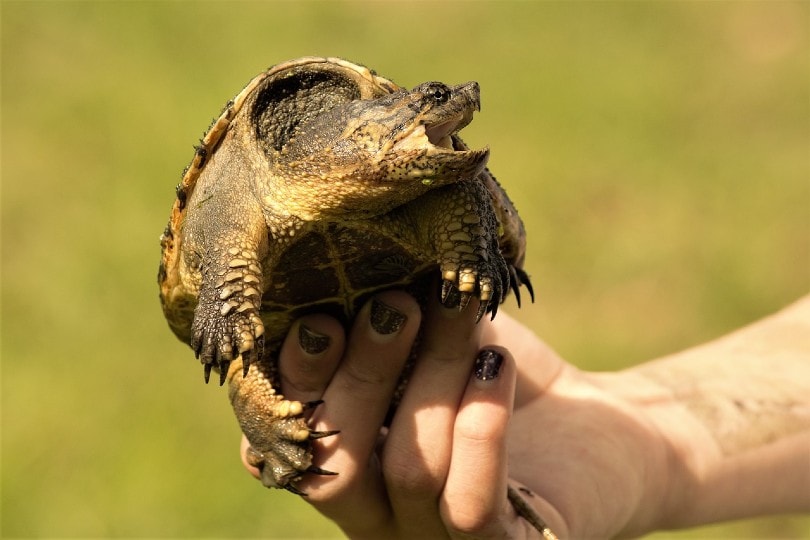
Turtles don’t have visible ears. Instead, they have a thin skin called a tympanic membrane at the back of their heads, which covers their inner ear bones and conducts sounds and vibrations.
Neck
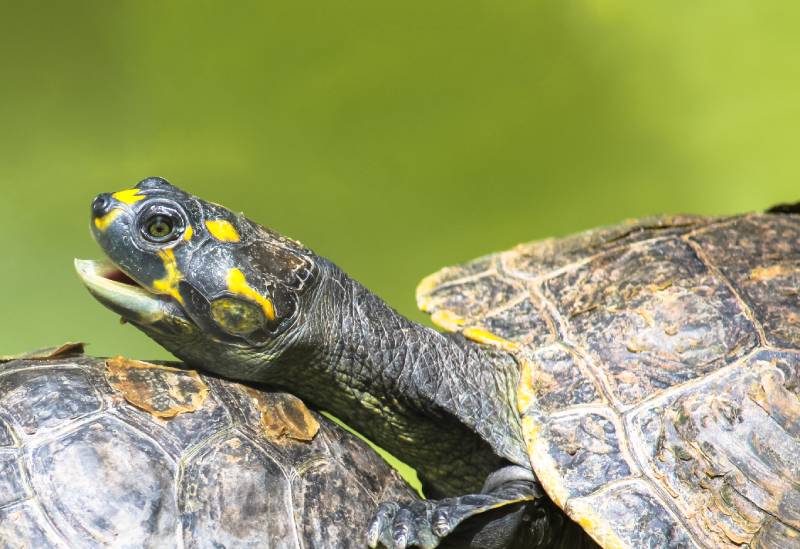
A turtle’s neck connects its head to its body. In most species, it can pull back into the shell along with the head.
Shell
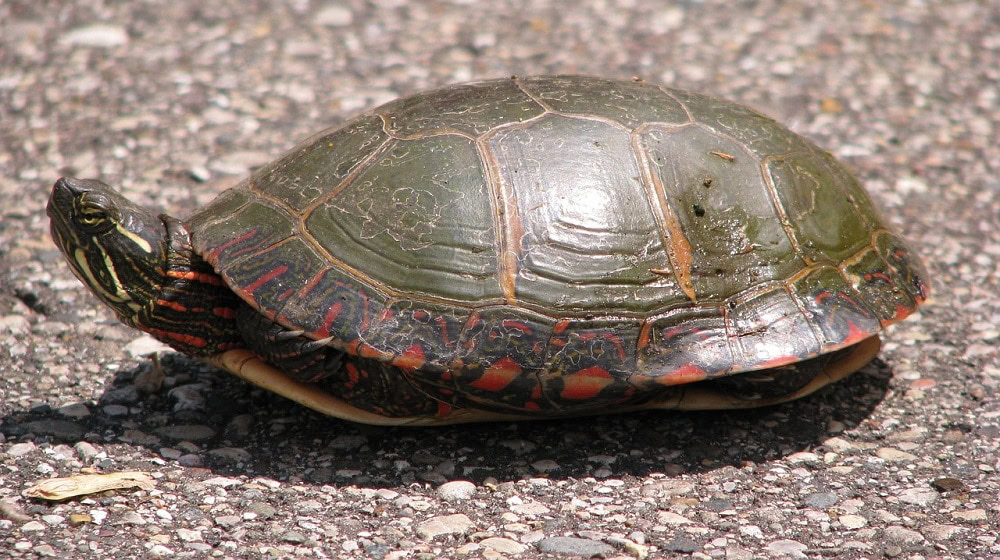
The most famous part of the turtle’s body is the shell. A turtle shell is divided into the carapace and the plastron.
Carapace
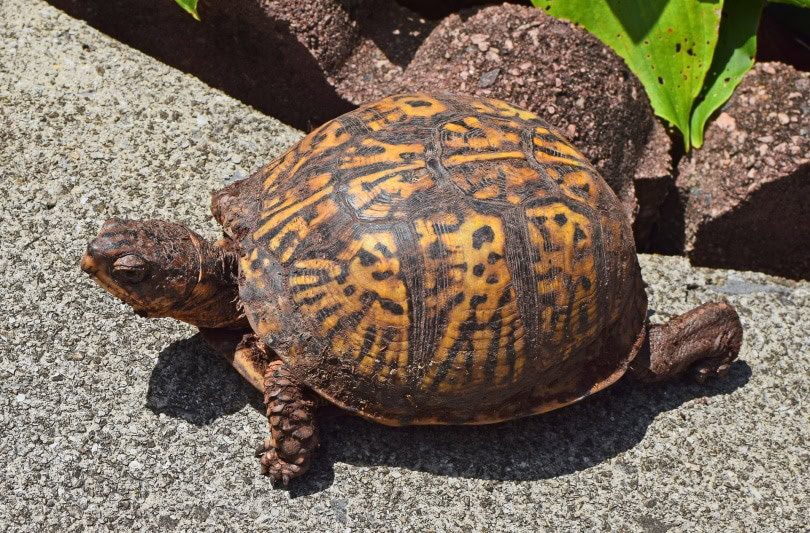
The upper shell is called the carapace. A turtle’s inner shell is made of bones. The outer shell of most turtles is covered in hard scales or scutes. Some species have tough skin covering their shell instead.
Like human hair and nails, turtle scutes are made of keratin.
- Nuchal scutes: Above the head
- Vertebral scutes: Down the middle of the shell
- Costal scutes: On either side of the vertebral
- Marginal scutes: Around the edge of the shell
- Supracaudal scutes: Above the tail
The carapace’s shape, color, and pattern can help you identify different turtles and tortoises. Land turtles usually have rounder and heavier shells than aquatic turtles, which are thinner and more streamlined for easier swimming.
Bridges
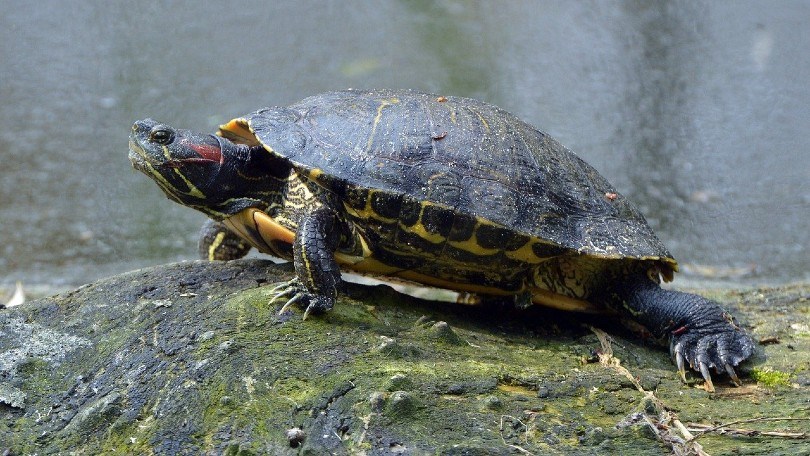
Bridges are made of bone and run along the turtle’s sides, connecting the shell’s upper and lower parts.
Plastron
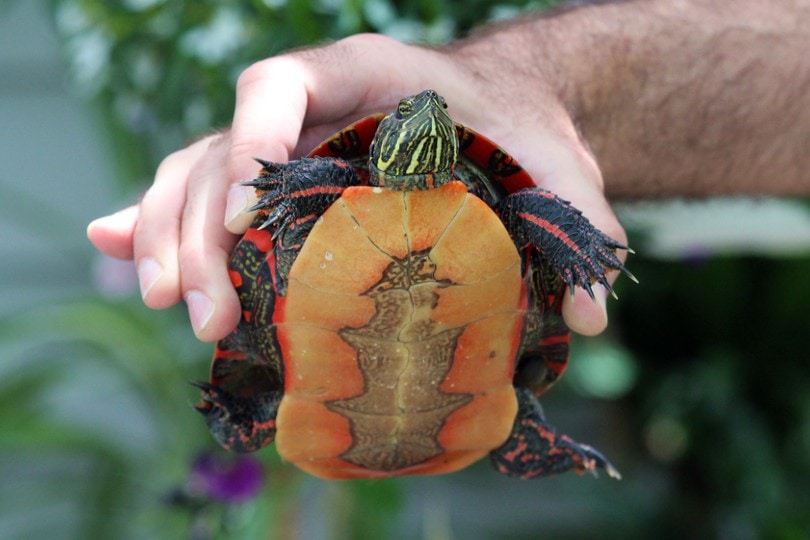
The turtle’s lower shell, the plastron, is also made up of scutes, which are also named for their location.
- Anal scutes
- Femoral scutes
- Abdominal scutes
- Pectoral scutes
- Humeral scutes
- Gular scutes
Some species can clamp their head and tail scutes tightly into the carapace, sealing themselves inside for protection.
Skin
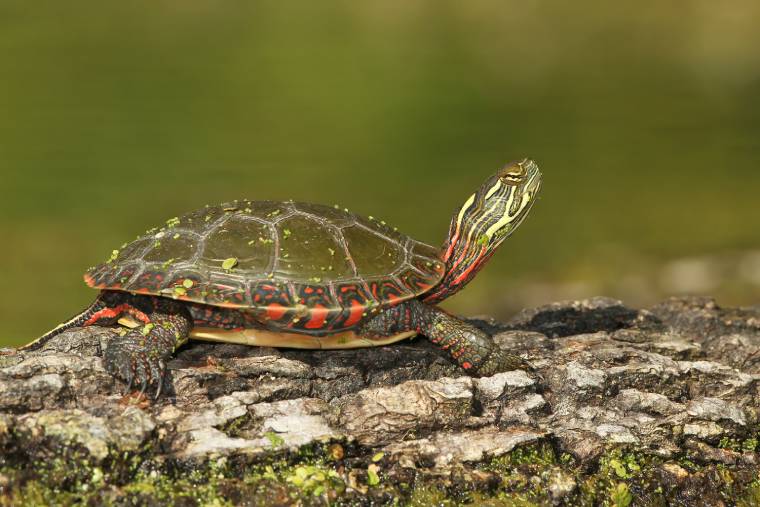
The turtle’s skin is also made of keratin and covers the tail, limbs, and head. The texture and thickness of the skin vary based on the species.
Limbs
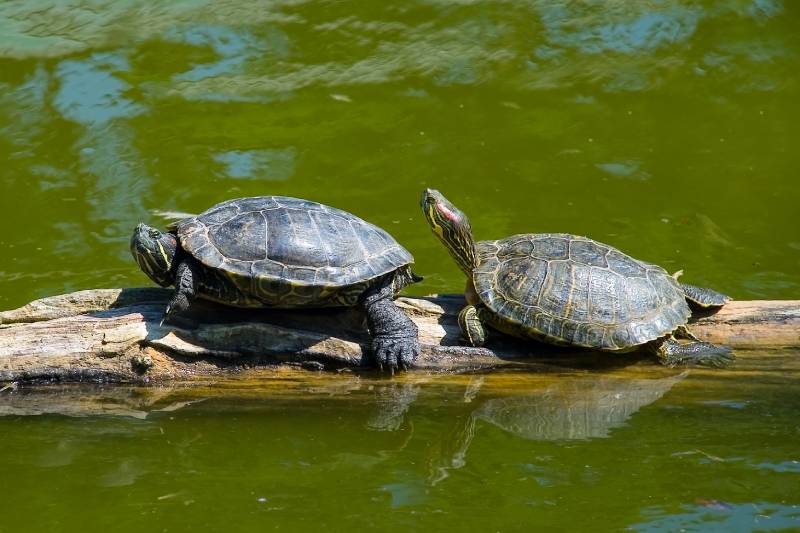
All turtles have four limbs, but their appearance depends on where they live.
Land turtles have thick, stubby legs and feet with claws for digging. Aquatic or semi-aquatic turtles also have four legs, but they usually have webbed feet and long claws, and a few have flippers. Sea turtles, who spend almost their entire lives beneath the waves, have flippers instead of legs and different-shaped claws.
Tail
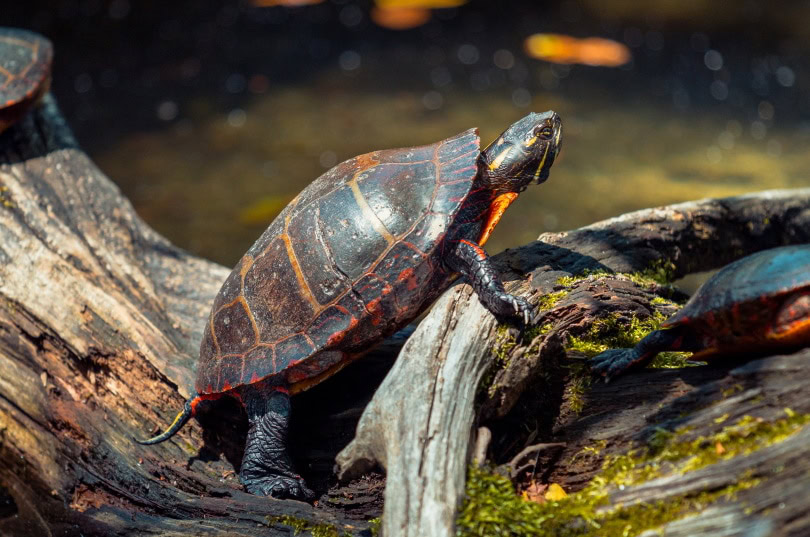
At the back of the turtle, you’ll find their tail. The size and length of the tail vary based on the species and whether they are male or female. In fact, the tail size is one way to tell the difference between adult male and female turtles. Males generally have longer and thicker tails because they contain their reproductive organs.

Conclusion
Turtles are fascinating reptiles, whether observed in the wild or kept as pets. Knowledge of the turtle’s body parts can help identify different species and improve the level of care you give your pet turtle or tortoise.
See Also:
- Do Turtles Have Good Eyesight? Vet Approved Facts
- Can Turtles See Color? Vet Approved Science & Facts
Featured Image Credit by M.E. Parker, Shutterstock
